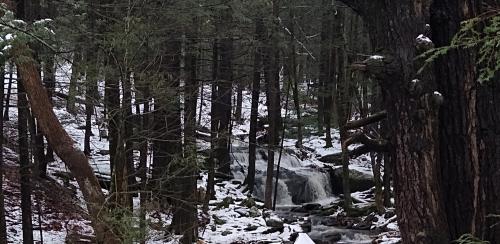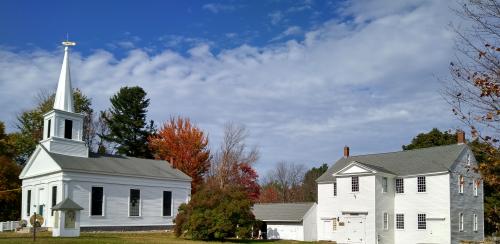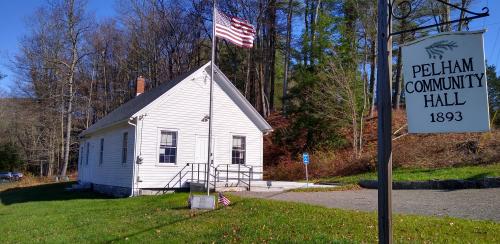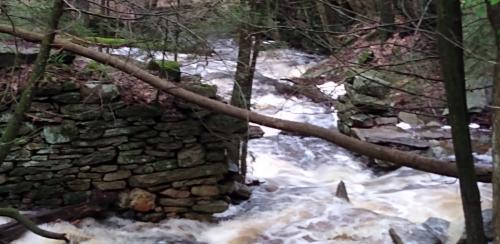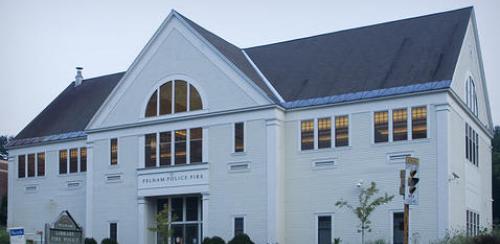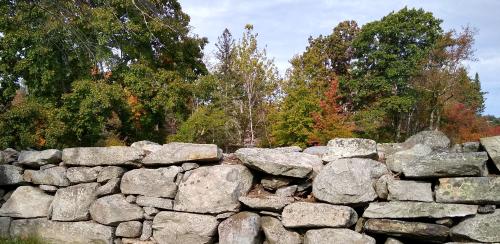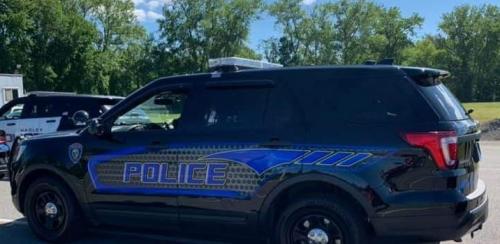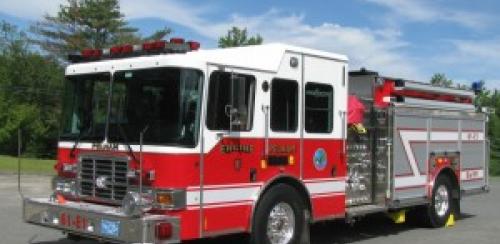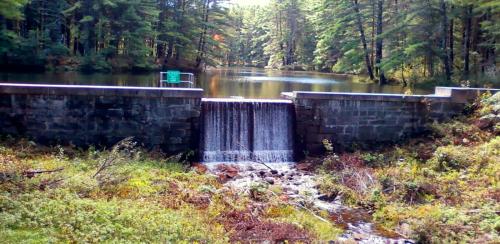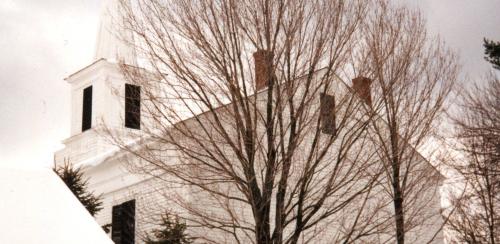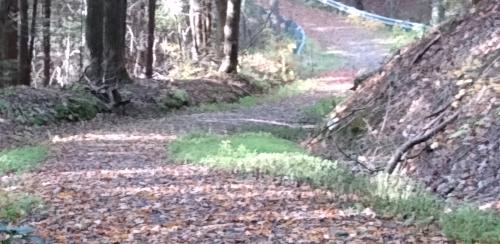Board of Health
ARTICLE I
General Regulations
ARTICLE II
Well and Water Regulations
ARTICLE III
Surface and Ground Water Protection
§ 130-19. Percolation tests. (Season March 15 to May 15)
[HISTORY: Adopted by the Board of Health of the Town of Pelham as indicated in article histories. Amendments noted where applicable.]
GENERAL REFERENCES
Solid waste -- See Ch. 91. Farm and nonfarm animals -- See Ch. 125, § 125-15.
ARTICLE I
General Regulations
[Adopted 1929]
§ 130-1. Authority and purpose.
The Board of Health of the Town of Pelham acting under the authority of the General Laws and amendments and additions thereto, and by any other power thereto enabling, and acting thereunder and in accordance therewith, have, in the interest of and for the preservation of the public health, duly made and adopted the following rules and regulations.
§ 130-2. Nuisances.
A. Any person or persons owning or having control of any building or premises shall keep the same in a clean condition, and any such person having control of any building or premises, in or upon which there is any substance or material, or any condition, which is or may become a source of danger to the public health or a nuisance, shall, when ordered by the Board of Health in writing, remove or abate the same within the time specified in said order.
B. Any person or persons owning or having control of any premises abutting on a private way, and having the right to use such private way, shall, when ordered by the Board of Health in writing, remove or abate from that part of said private way adjoining such premises any substance, material or condition, which is or may become a menace to the public health, and such removal or abatement shall take place within the time specified in said order.
C. No person or persons shall place or cause to be placed or left in or upon any public or private street or way enclosure or grounds or in any body or stream of water within the limits of this town the body of any dead animal, fowl or any substance or material that is or may become offensive or cause a nuisance or may tend to obstruct the flow of any stream.
D. The owner, agent or lessee of any land or enclosure used as a dump, either public or private, shall cause all offensive matter dumped thereon to be immediately covered and all other refuse matter dumped thereon to be kept leveled and the premises kept in such a manner as to cause no nuisance during the process of filling. All possible care shall be used in preventing the escape of dust and papers from the dump and from the vehicle used in conveying waste materials to the dump.
E. No owner, occupant or agent of any building or premises shall permit any sewage, garbage, contents or drainage or a privy vault, septic tank, cesspool or water closet or sink drain or any other filth to empty on the surface of the ground or enter into any drain designed for the removal of surface water or any ditch, brook, stream or body of water.
§ 130-3. Milk regulations.
A. All milk, cream, skimmed milk and milk or skimmed milk beverage sold in the public schools for the consumption of students and teachers therein shall be pasteurized.
B. No person, firm or corporation shall sell, exchange, deliver, or have in his custody with intent to do so, milk from any cow unless said cow has within a period of six months passed without reaction a tuberculin test as established under the laws of the Commonwealth of Massachusetts, or unless said cow is in a tuberculosis-free accredited herd tested under the plan as adopted by the United States Bureau of Animal Industry. This regulation shall not apply to pasteurized milk or milk intended for pasteurization.
§ 130-4. Pigs and piggeries.[1]
A. No individuals, partnership, company or corporation shall keep a pig or swine within the limits of this municipality without first obtaining a permit from the Board of Health. All such permits shall expire on December 31 of each year unless sooner revoked. Any permit may be revoked at any time by the Board of Health for cause.
B. All piggeries shall be suitably isolated and maintained in such a manner that no nuisance shall be created thereby. No pen or enclosure shall be located within 150 feet of any public highway.
§ 130-5. Violations and penalties.
Whoever violates any of these rules and regulations shall forfeit a sum not exceeding $100 except when otherwise provided by law or by these regulations.
ARTICLE II
Well and Water Regulations
[Adopted 12-15-1983]
§ 130-6. Definitions.
As used in this article, the following terms shall have the meanings indicated:
WELL -- Includes any pit, pipe, excavation, spring, casing, drill hole or other source of water to be used for any purpose of supplying potable water in the Town of Pelham and shall include dug wells, driven or tubular wells, drilled wells (artesian or otherwise) and springs, gravel-packed, gravel-walled wells, gravel developed and wash boring and as further described in the Massachusetts Department of Public Health Bulletin, "Rural Water Supplies 1956."
§ 130-7. Permit required.
No water supply well shall be dug, drilled or otherwise constructed until a permit for its construction shall have been issued by the Board of Health.
§ 130-8. Well drillers registration certificate.
No well digger or driller shall engage in the construction of wells without first furnishing to the Board of Health a copy of his/her valid state well drillers registration certificate.
§ 130-9. Application procedure.
A. An application for a well construction permit shall be submitted on a form supplied by the Board of Health. Such application shall be accompanied by a scale plan of the property to be served and of the well site showing existing and proposed structures, surface water drains, foundation drains, sewage disposal systems, potential sources of pollution and all surface water bodies (e.g., ponds, streams, brooks, surface drains, swamps, etc.) within a one-hundred-foot radius of the proposed well site.
B. The well driller or digger shall disclose the proposed depth to which the well will be drilled or dug. The well driller or digger shall, at the time of application, disclose the presence of any factors known to him/her or that may reasonably be expected to be known to an experienced well driller or digger which may render the water from the proposed well unpotable.
§ 130-10. Reports to Board of Health.
Each well driller or digger shall, upon completion of a well, furnish the Board of Health with a copy of the completed State Water Well Completion Report, and the property holder shall furnish the Board of Health the results of bacteriological, physical and sanitary chemical analyses of the well water. Such analyses shall include standard tests for total and fecal coliform organisms, color, turbidity, sediment, odor, pH, hardness, sodium, iron, manganese, chloride, ammonia, nitrogen, nitrate and nitrite. The results of such tests shall also be provided to the owner of the property to be served by the well, and all tests shall be performed by a Massachusetts state certified laboratory.
§ 130-11. Location of wells.
No water supply well shall be located closer than 20 feet to the property or rights-of-way lines, 100 feet from sewage disposal systems or other sources of pollution or 25 feet from the high-water mark of any surface water body, drains carrying surface water or foundation drains. In areas where soil percolation rates are faster than two minutes per inch, the well shall be 150 feet from private and public water sources. The generalities of the aforesaid not withstanding, no one shall position, locate, drill or dig a well or cause the same to be done in such a manner as to limit the use or enjoyment of any neighboring property in any manner whatsoever.
§ 130-12. Issuance of building permit.
The well shall be drilled or dug and then tested and approved by the Board of Health before a building permit shall be issued.
§ 130-13. Construction standards.
Each well shall be constructed and disinfected in accordance with the specifications and procedures set forth in Part II, Manual of Individual Water Supply Systems, published by the United States Environmental Protection Agency, 1973.
§ 130-14. Violations and penalties.
Whosoever violates any of these rules and regulations shall, upon conviction, be fined not less than $10 nor more than $500, except when otherwise provided by law.
§ 130-15. Severability.
If any article, regulation, paragraph, sentence, clause, phrase or word of the rules and regulations adopted by the Pelham Board of Health shall be declared invalid for any reason whatsoever, that decision shall not affect any other portion of said regulations which shall remain in full force and effect, and to this end, the provisions and rules and regulations of the Pelham Board of Health are hereby declared severable.
ARTICLE III
Surface and Ground Water Protection
[Adopted as indicated in text]
§ 130-16. Authority. [3-11-1992]
These regulations are enacted by the Pelham Board of Health under the authority of MGL c. 111, §§ 31 and 122.
§ 130-17. Purpose. [3-11-1992]
These regulations are enacted for the protection of the public's health, safety and welfare. The intent of these regulation is to protect, preserve and maintain the surface and ground water resources by addressing environmental conditions specific to the Town of Pelham.
§ 130-18. Definitions. [3-11-1992]
As used in this article, the following terms shall have the meanings indicated:
AQUIFER -- Geologic formation composed of rock or sand and gravel that contains significant amounts of potentially recoverable potable water.
GROUNDWATER -- All water found beneath the surface of the ground.
IMPERVIOUS MATERIALS -- Geologic substances having a percolation rate greater than 30 minutes per inch.
LEACHING PITS -- Leaching facilities constructed of brick, perforated concrete or interlocking concrete blocks which allow for the dispersion of effluent into surrounding stone and soil.
LEDGE -- The solid rock exposed at the ground surface or under unconsolidated layers of sand, gravel or clays.
MAXIMUM GROUNDWATER ELEVATION -- The height of the groundwater, or evidence of groundwater, at its maximum level which is usually, but not always, reached during December through April.
PRIMARY AQUIFER RECHARGE AREAS -- Areas which are underlain by surficial geologic deposits, including glaciofluvial or lacustrine stratified drift deposits or alluvium or swamp deposit, and in which the prevailing direction of groundwater flow is toward the area of influence of public water supply wells.
RAISED LEACH FACILITIES -- Subsurface sewage disposal systems constructed wholly or partially in fill, where such fill is necessary in order to achieve the required six feet of soil suitable for subsurface sewage disposal.
SECONDARY AQUIFER RECHARGE AREAS -- Areas which are underlain by surficial geologic deposits, including till or bedrock, and in which the prevailing direction of surface water flow is toward public water supply wells or potential sites for such wells.
§ 130-19. Percolation tests. (Season March 15 to May 15).
A. Prior to any percolation testing to be scheduled for observation by the Pelham Board of Health or its agents, the applicant or owner of the parcel in question shall present a final determination of applicability as to the existence and location of areas subject to the protection of Chapter 119, Wetlands Protection, of the Code of the Town of Pelham and/or the Wetlands Protection Act (MGL c. 131, § 40). [3-10-1988]
B. All sites where percolation tests are attempted shall be accurately marked on the map which records the results of a percolation test and the results of those attempts reported. [3-1-1987]
C. If a percolation test fails, a second attempt can be located no closer than 40 feet to the failed site. [3-1-1987]
D. All percolation tests shall be accurately located on a scale map of the lot. All measurements shall be in customary units and shall be referenced to a survey pin. The map will be filed, together with the results of the percolation tests, with the Board of Health. In the case of subdivisions, only percolation tests done on surveyed lots are to be considered as official by the Board of Health. [3-1-1987]
E. The Board of Health is the only body which can decide if a percolation test passes or fails. It must receive the results of percolation tests at the next public meeting within 30 days of completion and review those results and vote to accept or reject the said results at the said meeting. The results of all tests will be kept on file by the Board of Health. [3-1-1987]
F. A percolation test will be deemed to have failed if:
(1) Ledge or other impervious material is found at a depth closer to the surface than will permit at least six feet of undisturbed soil which is suitable for disposal of the liquid effluent of a sanitary disposal works (septic system).
(2) The maximum groundwater elevation (or evidence of the presence of water, including but not limited to seepage, mottling, soil color or soil morphology) is found at a level or depth closer to the surface than will permit at least six feet of undisturbed soil which is suitable for disposal of the liquid effluent of a sanitary disposal works (septic system). See exceptions, § 130-21. [3-1-1986]
G. Percolation test sites must be marked in an enduring manner, such as with a metal stake, a cairn, concrete marker, etc., so that they may be located accurately in the future. [3-1-1986]
§ 130-20. Sanitary disposal works.
A. An individual sewage disposal system shall be located at least 100 feet from any area delineated as under jurisdiction and subject to the protection of Chapter 119, Wetlands Protection, of the Code of the Town of Pelham and/or the Wetlands Protection Act (MGL c. 131, § 40). [3-11-1992]
B. The use of curtain drains or swales to redirect surface water or lower the water table shall not be permitted in new construction of sanitary disposal works. See exceptions, § 130-21. [3-1-1986]
C. [3-1-1986] The use of raised leach fields shall not be permitted in new construction. See exceptions, § 130-21. A raised leach facility is defined as a sewage system constructed wholly or partially in fill, where such fill is necessary in order to achieve the required six feet of soil. This section shall not prohibit the use of fill in the following circumstances:
(1) In instances where the top- and subsoil are required to be removed and replaced with fill for a distance of 10 feet surrounding the leach system, provided that six feet of naturally occurring permeable soil is beneath the system and system construction is below natural grade elevation.
(2) The use of fill as cover material, for backfilling, grading, including slope reduction, landscaping or other similar uses consequential to building construction. [10-14-1992]
D. In septic system designs and installations, the clearance between the water table and/or ledge and the bottom of the leach facility shall be six feet. [2-10-1988]
E. [3-11-1992] Within the Water Supply Protection District as established by Chapter 125, Zoning, of the Code of the Town of Pelham, the following additional regulations shall apply:
(1) The siting of individual sewage disposal systems that are designed to receive more than 110 gallons of sewage per 1/4 acre per day or 440 gallons of sewage on any one acre per day, whichever is greater, shall be prohibited, except for the repair or replacement of an existing system.
(2) In areas where soil percolation rates are faster than 2 minutes per inch, the Board of Health may impose additional measures reasonably necessary to protect public and private drinking water sources, such as but not limited to the following:
(a) Prohibiting the use of leaching pits with an effective depth greater than two feet, including the underlying washed stone, as a disposal method.
(b) Requiring the following separation and setback distances from private and public water sources:
[1] Wells: 150 feet.
[2] Public surface water supplies (reservoirs), including tributaries and drains thereto: 150 feet.
[3] Wetland systems located within primary and secondary recharge areas: 150 feet.
(c) Requiring the use of monitoring wells and periodic groundwater testing.
(3) In evaluating the need to impose additional protective measures, the Board of Health shall consider such site factors as development density, water supply location in relation to septic system placement, surface and ground water flow, topography and soil type.
§ 130-21. Exception to regulations dated March 1, 1986.
The design criteria effective March 1, 1986, will come into force January 1, 1988, for properties which the Pelham Board of Health has recorded valid percolation tests. Until that date, design criteria current as of the February 28, 1986, shall be in force for those properties. It is not the intention of these regulations to invalidate results of prior percolation tests.
§ 130-22. Wells. [3-1-1987]
Dug or shallow wells are not permitted for new construction in the Town of Pelham.
§ 130-23. Permit and license fees.
Permit and license fees shall be as follows:
Type of Permit/License Price
Camp site $ 25
Disposal works: 75
New
Repair 35
Food handler 20
Installers license 50
Milk dealers 10
Offal removal 50
Percolation test:
Each lot prepaid, first hour 100
Failure to appear at test without 48 hours notice 100
Plumbing:
New dwelling 100
Renovation, each fixture 15
Rubbish remover 50
Solar hitch 45
Trailer park 25
Well* 15
NOTES:
* Well diggers do not have to pay if the fee of $15 is paid for the permit.
§ 130-24. Variances. [3-11-1992]
The Pelham Board of Health may vary the provisions of these regulations when, in the Board's opinion, strict enforcement will manifest injustice. Any request for a variance shall be made in writing and shall state the specific regulation and reasons therefor. The Board of Health will not consider any request unless the applicant has, at his or her own expense, notified all abutters by certified mail at least 10 days prior to the Board of Health meeting at which the variance request will be heard. These notification requirements are waived for variances to repair existing septic systems. No provision of these regulations shall be construed as limitation on the emergency powers of the Pelham Board of Health.
§ 130-25. Enforcement; violations and penalties. [3-11-1992]
A. The Pelham Board of Health may take any enforcement action deemed lawful and appropriate.
B. Whosoever violates any of these regulations shall, upon conviction, be fined not less than $10 nor more than $500, except when otherwise provided by law.
§ 130-26. Severability. [3-11-1992]
If any section, sentence, phrase or word of these regulations shall be declared invalid for any reason whatsoever, that decision shall not affect any other portion of these regulations, which shall remain in full force and effect, and to this end, the provisions of these regulations are hereby declared severable.
[1] Editor's Note: See also Ch. 125, Zoning, § 125-15, Commercial keeping of farm animals.

